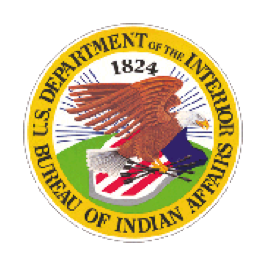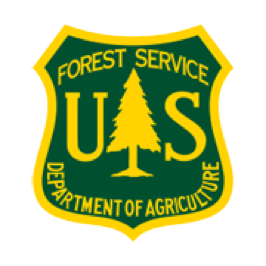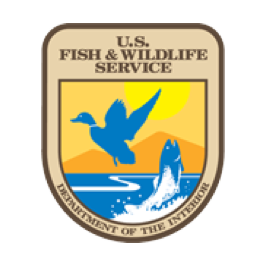Underfunded but passionate, Native American conservationists call for more support
Underfunded but passionate, Native American conservationists call for more support
- While tribal nations receive less funding for conservation than state agencies, Native American wildlife biologists have dedicated themselves to protecting species, like the black-footed ferret (Mustela nigripes), from going extinct.
- Just $5 million to $6 million is available per year for the 574 Indigenous tribes that manage more than 56 million hectares (140 million acres) of land across the U.S. to compete for as nonrenewable grants.
- Tribal conservationists say they hope the Recovering America’s Wildlife Act passes Congress after being introduced earlier this year.
- The bill aims to provide $97.5 million annually to tribal nations for protecting animals and plants from extinction.
In the prairies of the Lower Brulé Indian Reservation, the typically knee-high grass extends to the horizon. But in areas home to burrowing mammals, like prairie dogs (Cynomys ludovicianus), the grass shrinks to an inch in height as the animals feed their vigorous appetite.
After sunset one September day, wildlife biologist Shaun Grassel drives through these burrow-filled habitats and scans the landscape, using a spotlight that reflects off the eyes of a variety of nocturnal mammals. If the eyes shine back green, they belong to the black-footed ferret (Mustela nigripes), a long-bodied mammal popping aboveground for a late-night prairie dog hunt.
These ferrets are likely descendants from those that Grassel helped release during the South Dakota reservation’s reintroduction efforts. Before the reintroductions that started in 2006, the reservation lost all its black-footed ferrets, a federally endangered species once common in the Midwest prairies. Now, based on a fall 2020 survey, their population stands at approximately 25, says Grassel, who studied ferret populations on the reservation during his Ph.D. program.

Grassel, a member of the Lower Brulé Sioux Tribe, has been a biologist for more than two decades on the reservation where he grew up. As a child, he frequently explored the reservation’s landscape, amassing knowledge of its ecology, and listened to stories his family members shared about the land’s history.
“Where I grew up played a big role in why I got into the field [of wildlife biology],” he says.
Grassel is one of many Native American biologists managing threatened species on tribal lands. Despite a historical lack of funding from the U.S. government, Indigenous nations have been essential to protecting some of the nation’s most at-threat species.
“It’s amazing how much work we can do with so little funding,” Grassel says. “We’re very passionate about what we do because this is our land, this is our wildlife.”
Unlike state agencies, tribal nations don’t receive annual federal funding dedicated to their fish and wildlife programs, says Julie Thorstenson. A member of the Cheyenne River Sioux Tribe, Thorstenson directs the Native American Fish and Wildlife Society, which provides tribes with education, training and administrative support for protecting natural resources.
Often, tribes must compete for nonrenewable grants from federal agencies to fund their wildlife programs. Typically, there’s only $5 million to $6 million of these grants available per year to share between 574 tribes that manage more than 56 million hectares (140 million acres) of land.
To fund ferret recovery, Grassel must write grant proposals and hope that his proposal is selected from among the many other applications. Consequently, he’s unsure of how much funding the program will have from year to year, he says.

A bill now being deliberated in Congress may provide stable funding for tribal-led conservation for the first time, Thorstenson says. If passed, the Recovering America’s Wildlife Act will distribute $97.5 million annually to tribal nations for protecting threatened animals and plants. This represents one piece of the bill’s proposed $1.39 billion investment in conservation.
“For tribal fish and wildlife professionals that have been working in this field for a long time, I think its passage will finally feel like validation of all their hard work,” Thorstenson says.
A conservation team spread thin
Funding tribal-led conservation is important, says wildlife biologist Caleb Hickman, noting that many tribal nations are home to incredible biodiversity.
Hickman manages wildlife for the Eastern Band of Cherokee Indians, a tribal nation in North Carolina. The nation lies within the Southern Appalachian Mountains, which contains the planet’s largest diversity of salamanders (Urodela spp.), thanks to its variety of habitats and climates. The nation also houses many federally protected species, including the Carolina northern flying squirrel (Glaucomys sabrinus), which glides between treetops using its parachute-like body.
Hickman, a citizen of the Cherokee Nation, helps to preserve the tribal nation’s biodiversity by collecting data to inform conservation. For the flying squirrel, he’s studying its population size and habitat preferences to analyze where to focus protection efforts.
With greater funding, Hickman says he hopes to answer questions critical to planning conservation, like how climate change might affect the squirrel’s mountain habitat.
“The Recovering America’s Wildlife Act will allow us the funding and the support to start understanding more about these squirrels in our landscape,” he says.

Hickman says the bill’s funding would help the Eastern Band of Cherokee Indians hire more staff members. Currently, the nation has a fish and wildlife management staff of only four, to manage some 23,300 hectares (57,600 acres) of land. For comparison, North Carolina’s natural resources department has a staff of more than 1,500 for the entire state.
Amid the staffing shortages, Hickman has to juggle his work with a variety of species, from crayfish (family Cambaridae) to salamanders to elk (Cervus canadensis). His multidisciplinary science background allows him to navigate between 19 annual projects, but he says he wishes he could focus on a smaller number.
“We [tribal biologists] end up having to be a jack-of-all-trades, master of none,” he says.
Funding would also help the wildlife management team acquire much-needed equipment, Hickman says. Currently, there’s not enough designated lab spaces or equipment to monitor the wildlife diseases that could hinder conservation.
“My office is also my lab and meeting room. We’re often dissecting an animal on a desk that we might have to have a meeting on later,” he says.
To support their conservation work, many tribal nations partner with governmental and nongovernmental entities. The Eastern Band of Cherokee Indians has partnered with fish hatcheries to help restore the sicklefin redhorse (Moxostoma spp.), an olive-colored fish listed as threatened in North Carolina, to tribal riverways.

The fish was a historically important part of the diet of Cherokee citizens, who had named the fish species centuries before Western science documented it, Hickman says. In 2018, a graduate student’s survey couldn’t detect a single sicklefin redhorse in tribal waters of the Oconaluftee River, where the fish used to abound.
Hickman has helped with releasing captive-bred sicklefin redhorse into the Oconaluftee River. The Eastern Band of Cherokee Indians and other groups collected eggs and sperm from healthy fish populations outside of the tribe, then sent the gametes to a hatchery, run by the U.S. Fish and Wildlife Service, to produce fertilized eggs, which hatch and develop into adult fish in tanks.
The Eastern Band of Cherokee Indians also has a partnership with state agencies to monitor the success of the releases, through DNA sampling of water and recapturing methods. Hickman says they’re currently searching for evidence that the fish are breeding in tribal waters, but haven’t found any signs yet.
If researchers do find evidence that the released fish can produce progeny, it could be a promising sign for rehabilitating sicklefin redhorse populations — not just within the tribe’s lands but beyond. A 2016 report from the USFWS said the sicklefin redhorse’s range had shrunk dramatically from historic levels in North Carolina and Georgia. Data reviewed by the agency suggested that hydroelectric dams were harming the fish by fragmenting their populations and degrading their habitat.

The releases in tribal waters could someday help restore fish populations in the parts of western North Carolina, where the species has declined, since the Oconaluftee River feeds into other water bodies. According to Hickman, many tribal wildlife biologists are passionate about protecting vulnerable species, like the sicklefin redhorse, because their ancestors co-existed with the land for so long.
“We have a long history, thousands of years, of co-existence with some of these species,” he says, “and to see them die off on our watch is wrong.”
Black-footed ferret recovery
One example of the impact of tribal-led conservation, Thorstenson said, is the recovery effort for the black-footed ferret.
Historically, the ferret’s range stretched across more than 39 million hectares (96 million acres) of Midwest habitat containing an abundance of prairie dogs — rodents that the ferret preys on almost exclusively. In the late 1800s, prairie dog populations started to dwindle as more ranchers settled in the area, destroying the rodent’s colonies while creating farmland. Some ranchers deliberately poisoned prairie dogs to prevent them from competing with livestock for vegetation.
These actions left the ferrets without their main food source, slashing their populations until the species was declared extinct in 1979. Two years later, a small ferret colony was discovered in Wyoming. All ferrets used in today’s releases are descended from seven animals captured from this colony and bred in captivity.
Project Ark, an NGO involved in the ferret initiative, reported that the 2020 population of the species was around 300. Ferret releases on tribal lands have been critical in preventing the species’ extinction, Thorstenson says.

“There are several tribes in the great plains region and Arizona that have been integral to the success of the black-footed ferret,” she says.
For South Dakota’s earliest ferret reintroductions, three out of the six sites were on tribal lands, USFWS reported. One of these sites was the Cheyenne River Reservation, where Thorstenson monitored the success of ferret releases as a wildlife biologist.
The reservation started releasing ferrets in 2000. Two decades on, they’ve established a healthy enough population to allow the Lower Brulé Sioux Tribe to capture some ferrets for the reintroductions that Shaun Grassel leads. He has also obtained ferrets from captive-breeding facilities and the Buffalo Gap National Grasslands.
More recently, Grassel released ferrets in November 2020 to support the recovering population on the reservation. To plan for releases, Grassel searches for burrows sheltering prairie dogs. He then sets down the ferret’s kennel near the burrow and opens the door. Most of the time, the ferret bolts out of the kennel’s dark tube, placed inside to satisfy their nighttime preferences, and bolts into the burrow to catch its prey. If the animal is captive bred, it might be more hesitant to leave the kennel.
On tribal lands, ferret releases sometimes have a cultural aspect, while releases on non-tribal lands rarely do, Grassel says. Reservations may hold a spiritual ceremony to honor the ferret releases or a gathering of community members to observe. “There’s sometimes prayers and blessings,” Grassel says.
Recovery efforts at the Lower Brulé Indian Reservation went well until 2011, when the site had its first outbreak of the sylvatic plague, a bacterial infection transmitted by fleas. Grassel says the flea-borne disease killed nearly all their black-footed ferrets, in addition to infecting prairie dogs.

“That [outbreak] took us back down to square one, even beyond square one because we lost a lot of our habitat,” he says. “It took years to get more prairie dogs so we could once again put ferrets back out there.”
Now, Grassel protects ferrets by administering vaccines against the plague, provided by the USFWS. He also protects their prey by scattering flea-control medication near prairie dog burrows.
During nighttime spotlight surveys, Grassel traps ferrets by placing a one-way cage near their burrow, typically checking every three hours for a potential catch. He transports the ferrets to the tribe’s wildlife lab, where he anesthetizes them using a nose cone and immunizes them. Before the night ends, Grassel returns the ferrets to their home burrow and notes where to recapture them four weeks later, for their second plague vaccine dose.
Like with the COVID-19 vaccine, two doses are needed to achieve full immunity against the sylvatic plague, he says.
Aims of the Recovering America’s Wildlife Act
Grassel says that if the U.S. Congress passes the Recovering America’s Wildlife Act, it will be a game changer for his reservation’s conservation projects.
The bill, introduced in April 2021, would provide state agencies and tribes with more than $1 billion annually to protect endangered or threatened species. However, earlier versions of the bill didn’t include funding for Indigenous nations. For the final version, tribal representatives, including Grassel, collaborated with lawmakers to guarantee nations $97.5 million a year. The bill would allow tribes to use funds for research, habitat restoration, environmental law enforcement, or education.
The bill aims to close the gap between the amount of funding Congress issues and how much entities report they need for conservation.
Earlier this century, Congress tasked state and tribal governments to identify all species within their borders needing conservation attention. They collectively cataloged more than 12,000 animals and plants, in documents called wildlife action plans. To fund every conservation plan that entities proposed, Congress would need to distribute $1.3 billion a year — far more than what they currently issue. States typically receive less than $70 million a year, and tribal nations receive no renewable federal funding dedicated to conservation.

Instead, tribes must compete for wildlife protection grants, issued through a federal program created to fund both states and tribes. Since the grant program’s start two decades ago, tribal nations have received a total of $94 million, according to a USFWS report.
Hickman says his projects with the Eastern Band of Cherokee Indians relies on securing these grants.
“If we get a grant, it means another tribe won’t,” he says. “Unlike that, every state gets funding through their wildlife action plan.”
Competing for grants isn’t just a zero-sum game, but also time consuming, Thorstenson says. Writing a grant for every component of a conservation plan takes time away from fieldwork or data collection.
If the bill passes, tribes will receive annual funds with no grant writing involved. The factors determining how Congress will divide funds between tribes isn’t decided yet, but it could include the tribal nations’ size or number of endangered species.
The bill hasn’t been voted on yet, but both the House and the Senate introduced it after a bipartisan effort. In July, the House’s Natural Resource Committee began holding hearings on the bill.
Grassel says that, now more than ever, people in Washington, D.C., are listening to the needs of tribal members.
“It feels like this is the best chance that we’ve had ever to get something like this passed for tribes,” he says.






